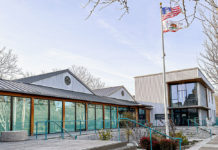In a series of letters and documents released Aug, 3, the California Department of Public Health (CDPH) has codified the guidelines under which a school or district may apply for a waiver to conduct in-person learning for elementary grades. Contrary to earlier reports, the waiver can be applied for by public, private and charter schools, and it applies to grades transitional kindergarten (TK) through sixth only.
Local schools and districts now wait for the Sonoma County Department of Health to review and approve those state documents, before they will be made available for their use, which is expected to happen Aug.5.
On July 17, Gov. Gavin Newsom announced that schools in counties that have been on the state’s watchlist within the past 14 days are only allowed to conduct distance learning, but that there would be a waiver process that could allow some elementary schools in those counties to conduct in-person learning if they could meet stringent health requirements.
As a result, the CDPH created a waiver process. According to the CDPH “A district superintendent, private school principal or head of school, or executive director of a charter school may apply for a waiver from the local health officer to open an elementary school for in-person instruction in a county on the monitoring list. This waiver is applicable only for grades TK-6, even if the grade configuration at the school includes additional grades. The application for a waiver must include an attestation that the applicant consulted with parents, labour and community organizations at each school site for which an application is being submitted.”
In addition to significant outreach to those stakeholders, the reopening plan must be published on the applying entity’s website and those plans must “address, at a minimum, plans for cleaning and disinfection, cohorting, movement within school, face coverings and protective equipment, health screenings, healthy hygiene practices, contact tracing, physical distancing, staff training and family education, testing, communication plans and triggers for switching to distance learning.”
Jamie Hansen, Director of Communications for the Sonoma County Office of Education (SCOE) said the waiver applications are extremely comprehensive.
“What a district needs to do when applying for the waiver is really show how they’re going to be able to meet all the CDPH health and safety guidelines,” she said. “They need a detailed plan and they need to post it on their website.”
She also added that buy-in from stakeholders is a key component, and that if, for example, a teacher’s union did not support the waiver application, that would have to be noted.
“The way the language is written is the application must show evidence of consultation with stakeholder groups,” she said. “If you’ve done that consultation and your union has raised issues, they would need to address that and show that they were not in agreement in the application.”
The final decision for granting the waiver will come from the local health officer — in Sonoma County’s case Dr. Sundari Mase —in consultation and agreement with CDPH. In addition, waivers can be conditionally granted with limits on the number of elementary schools allowed to re-open or allow re-opening in phases to monitor for any impact on the community.
Waiver process
The waiver process is lengthy, and applicants must meet a significant list of criteria to be considered. A copy of the sample letter and form can be found here.
To begin with, the CDPH recommends that schools within jurisdictions with 14-day case rates more than two times the threshold to be on the watchlist — which is 200 or more cases per 100,000 population — should not be considered for a waiver to re-open in-person instruction. (As of this writing, Sonoma County is at 188/100,000).
The waiver is only applicable only for grades TK-6, even if the grade configuration at the school includes additional grades. In other words, K-8 schools will not be allowed to have their seventh and eighth graders on campus, even if the waiver is granted. The application and all supporting documents must be submitted to the local health officer at least 14 days prior to the desired reopening date.
“The first thing is that if a school district were to get the application today and turn it in tomorrow, the earliest they could open would be 14 days later,” said Hansen. “At that point the county health officer will consider it, looking at local conditions. Then, if they want to grant the waiver, they still have to send to CDPH for public review so, that could potentially take more than 14 days depending on how overwhelmed the system is. That said, if any county has a case rate of more that 200 per 100,000 residents then they cannot grant any waivers. And we’re right on the cusp. That’s another factor that can affect the ability of these schools to have waivers approved.”
Waiver considerations
As mentioned, prior to applying for the waiver, the applicant must consult with labor, parent and community organizations (school-based nonprofit organizations and local organizations that support student enrichment, recreation, after-school programs, health services, early childhood services or provide family support) and also publish elementary school reopening plans on their website.
Elementary school reopening plans must address various health and safety issues, including cleaning and disinfection; small, stable, cohorting; entrance, egress and movement within the school; face coverings and other essential protective gear; health screenings for students and staff; healthy hygiene practices; identification and tracing of contacts; physical distancing; staff training and family education; testing of students and staff; triggers for switching to distance learning; and communication plans.
Related factors which the CDPH say should be considered when reviewing a waiver application include available scientific evidence regarding COVID-related risks in schools serving elementary-age students, along with the health-related risks for children who are not provided in-person instruction; whether elementary in-person instruction can be provided in small, stable cohorts; local health guidance, safety plans, availability of appropriate PPE and availability of public health and school resources for COVID-19 investigation and response; local epidemiological data; local conditions or data contributing to inclusion on the County Data Monitoring list; availability of testing resources; and the extent to which the applicant has consulted with staff, labor organizations, community and parent organizations.
If applying on behalf of a school district, the applicant should submit a consolidated application and publish a plan for all the elementary schools in the district that are seeking to reopen for in-person instruction. If applying for an independent, private, faith-based, or charter school, the applicant should submit an application and publish a plan for each individual school.
Local health officers have a long list of things they must take into account when considering waiver applications, including:
- Available scientific evidence regarding COVID-related risks in schools serving elementary-age students, along with the health-related risks for children who are not provided in-person instruction.
- State law directing public schools to “offer in-person instruction to the greatest extent possible.”
- Whether elementary, in-person instruction can be provided in small, stable cohorts.
- Local health guidance, safety plans, availability of appropriate PPE, and availability of public health and school resources for COVID-19 investigation and response.
- Current new case rate, testing % positivity trends, and the number and degree of indicators above thresholds to be on the watchlist.
- Local hospitalization trends and hospital capacity.
- Any other local conditions or data contributing to inclusion on the watchlist.
- Availability of testing resources within the community and via employee health plans.
Once this review is complete, local health officials will then submit a notice to CDPH, which will follow up if there are any questions or concerns and provide technical assistance as requested.
Local applicants
According to Hansen, 35 different entities (private schools, independent charter schools and public school districts) have expressed an interest in applying for the waiver. Just over half of them are private schools, and it is unknown how many will ultimately apply and how many will ultimately be granted.
Hansen mentioned the changes to the waivers since they were initially discussed, including dropping the grade range down to sixth grade, and added that another change is that the applications will now go directly to the county health department, rather than SCOE acting as a middle man.
“At this point, now that the process is in place we’re asking them to send applications directly to the county health department. They can CC us, but that’s the department that will be making the decisions,” Hansen said.
Another change is that public schools in particular can also apply for a waiver, not for full reopening, but for targeted opening for students with special needs, or those without family options for care or other groups more strongly effected by learning loss.
“This would be for elementary grades only and in many cases the public schools are not trying to open completely,” Hansen said. “Rather they’re trying to provide small group instruction for at-risk students. Some students and families are really impacted (by the pandemic). It is the goal of a lot of public schools to have small groups of particular students operating on campus. They can specify in their application, and then that would contrast with some of the private schools are who are hoping to open up entire grades because they have smaller student-to-teacher ratios, more space and just more flexibility.”
Because of the tight time frames, it is unlikely most applicants would be able to open with their waiver approved, meaning they’d have to start in distance learning. The absolute earliest an application could be submitted is Aug. 5 (though that would imply that an applicant has all their supporting document ready to go in 24 hours), and then it is at least 14 days for approval, making the first waivered day possible Aug. 19, which is after the start date for many schools.
“Some districts have pushed back their opening day, so if everything went really quickly, they got the application in tomorrow and it was approved in exactly 14 days, some might be able to start on opening day, but it’s honestly unlikely,” said Hansen. “They should go ahead and start getting their application in place and submit, but at same time it would be good to prepare for a distance learning opening as well, especially with not knowing what could happen with the case rate.”
However, as with everything in this pandemic world, all of this can change in an instant. “The information that we have today on the waiver could change tomorrow … we receive updates and changes so frequently these days that I think it is always important to say that,” Hansen said.









